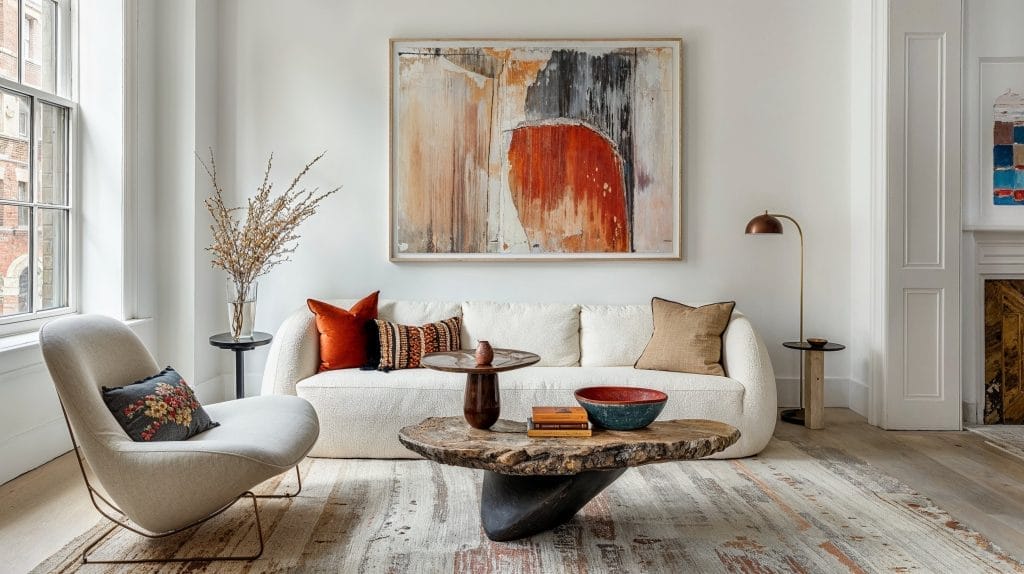Transform Your Home With Essential Principles of Interior Decoration and Appearances
The art of transforming your home with the crucial principles of interior decoration and looks calls for a thoughtful approach that harmonizes shade, equilibrium, and spatial awareness. By understanding the influence of shade concept and the value of appearance and patterns, one can develop rooms that are not just visually attractive but also deeply personal. Achieving this equilibrium involves greater than plain decor; it incorporates a strategic arrangement and an eager understanding of exactly how each element engages within an area. As we check out these foundational ideas, think about how they might redefine your understanding of home and personal expression.
Understanding Shade Theory
Recognizing the principles of color concept permits designers to develop spaces that resonate psychologically with occupants while meeting functional demands. Each group plays an important duty in establishing harmony within an area.
The mental impact of shades is profound; cozy colors such as reds and oranges stimulate power and warmth, while great tones like blues and greens promote calmness and harmony. The use of complementary colors improves aesthetic passion, developing striking contrasts that can boost a room's appeal.
Neutral colors, on the other hand, function as a flexible background, permitting various other layout components to shine. It is important to think about factors such as lighting and the room's purpose when selecting a color scheme, as these can modify the assumption of shades throughout the day.
Inevitably, a well-considered color design can change an area, promoting a sense of comfort and style that aligns with the residents' preferences. Mastery of shade concept is, as a result, a crucial ability for any interior developer intending to produce harmonious and inviting settings.
Attaining Balance in Design
Exactly how can designers accomplish a sense of balance in their spaces? Attaining balance in design is fundamental to producing unified insides.
Unbalanced balance, on the other hand, counts on differing elements that still accomplish a cohesive look. This strategy enables even more dynamic and casual arrangements, supplying interest while preserving stability. By thoroughly picking varying sizes, shades, and textures, designers can create an aesthetically engaging space that really feels well balanced yet energetic.
Radial balance highlights a main centerpiece with aspects emitting outward. This style is generally seen in circular layouts, where furniture and decoration develop a cohesive surround that draws the eye internal.
Inevitably, achieving balance needs thoughtful factor to consider of range, percentage, and the relationships between elements. miami interior design. By skillfully applying these equilibrium principles, designers can transform spaces into settings that feel both visually pleasing and functionally harmonious, improving the general experience for owners
Relevance of Spatial Awareness

An eager feeling of spatial awareness allows developers to recognize prime focus within a room, guiding the audience's interest to crucial functions while keeping a general feeling of Check This Out unity. It likewise helps in the critical positioning of lights, which can significantly influence the perception of space and mood. Additionally, understanding spatial relationships enables the designer to deal with the details demands of citizens, making certain that each location serves its designated purpose without compromising appearances.
Inevitably, spatial understanding is essential for optimizing the capacity of any indoor area. By carefully taking into consideration the interplay between measurements, design, and feature, developers can create settings that not only fulfill useful needs however also stimulate a sense of comfort and elegance, improving the total living experience.
Integrating Texture and Patterns
Welcoming a diverse series of textures and patterns can substantially enhance the aesthetic and tactile charm of an indoor space. The critical use numerous products-- such as timber, steel, material, and rock-- produces deepness and interest, making a space really feel much more welcoming and vibrant. As an example, incorporating smooth surfaces with rough appearances can establish an equilibrium that draws the eye and involves the detects.
When including patterns, consider both range and rep. Large patterns can function as prime focus, while smaller sized, subtle styles can enhance various other elements without overwhelming the area. additional resources Layering patterns, such as pairing flower paddings with striped throws, includes intricacy and a feeling of harmony if performed attentively.
It is likewise important to preserve a cohesive color palette, guaranteeing that structures and patterns interact instead of contend for interest. By choosing a few key appearances and patterns, you can produce a combined aesthetic that reflects your individual style while enhancing the overall setting of the space. Eventually, the careful unification of these aspects can transform an ordinary room into a sophisticated setting abundant with character and heat.
Customizing Your Space
Developing an area that reflects your personality is essential to accomplishing a really inviting atmosphere. Personalization in indoor style allows you to instill your distinct design and rate of interests right into your home, transforming it from a simple sanctuary into a refuge that speaks with that you are. Begin by choosing a color palette that resonates with your feelings-- strong tones can energize, while soft tones provide serenity.
Integrate art work and style that reflect your interests, whether it be traveling, nature, or abstract principles. Presenting individual collections, such as publications, photos, or mementos, can evoke cherished memories and produce prime focus within a room. Furthermore, think about tailoring useful items, like upholstered furniture, to straighten with your aesthetic preferences.

Final Thought
To conclude, the change of a home with the essential principles of interior decoration and looks demands an extensive understanding of color concept, equilibrium, spatial recognition, texture, and personalization. Each element contributes substantially to developing an unified and functional living atmosphere - miami luxury interior design. By attentively integrating these concepts, people can enhance the visual appeal and emotional her comment is here resonance of their spaces, eventually promoting a home that shows special identifications while supplying convenience and usefulness